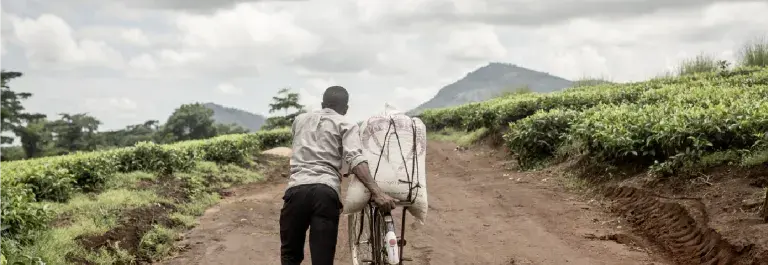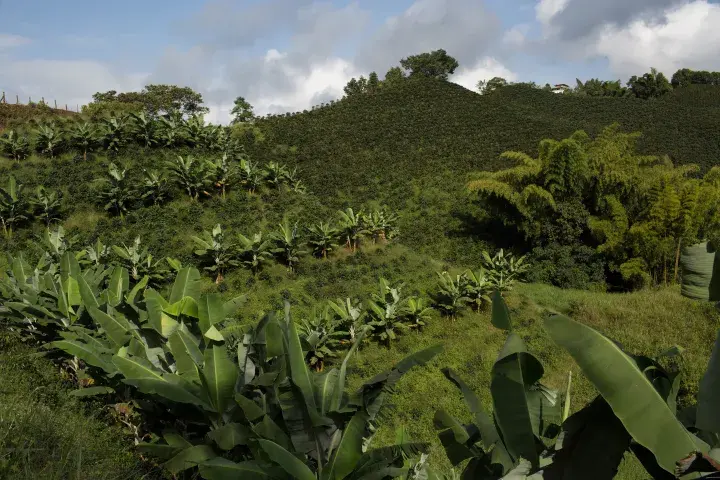Going beyond the poverty line
Ensuring resilient livelihoods and sustained employment for vulnerable communities was already a stretch pre-Covid-19. For those communities lacking a stable income, the impact has been inconceivable. With border closures and travel restrictions, the downturn in trade has massively affected the income and employment of these vulnerable communities, especially the self-employed.
Currently, more than 475 million smallholder families work on less than two hectares of land. In addition, average equilibrium market wages can be low, with prices that farmers earn for agricultural produce economically unsustainable.
According to the Living Income Community of Practice, a living income is about fostering a countries’ social and economic development, as well as decent pay and improved productivity of farming households. However, for far too many people, particularly farming families in the global south, their income barely covers the cost of living.
Families struggle to afford the food and healthcare they need or to send their children to school. Even for those who are getting by, a bad harvest, an accident or some other unexpected event – like the one we are experiencing now – is all it takes to tip them back into poverty.
Living income and the SDGs
The concept of living income links directly to several of the UN's Sustainable Development Goals (SDGs). In particular, SDG 1 no poverty, SDG 2 zero hunger, SDG 8 decent work and economic growth, SDG 10 reduced inequalities, and SDG 17 partnerships for the goals.
While ambitious sustainability goals and effective strategies to achieve these at a company level are vital, sector-wide transformation will only really happen through collective action. It is change at this scale that is needed for businesses to make a real contribution towards the poverty-free, sustainable world set out in the SDGs.
There are various levers which can help us to drive change and close the income gap. For example, implementing sustainable programmes at the producer level, applying a smart-mix of solution to balance supply and demand, and working with sustainability standards and strategies that specifically address living income.
Sustainability standards contribute to sustainable economic growth and greater productivity through diversification, technological upgrading and by providing training and sharing knowledge.
Many standards work with local partners to support livelihood opportunities and decent job creation – helping to improve business performance and access to credit lines and higher-value markets, particularly for SMEs. They can also improve resource efficiency and help to decouple economic growth from environmental degradation.
Sustainability standards’ role in helping drive change
However, more than identifying effective strategies is the monitoring and reporting of a strategy’s effectiveness in delivering a living income. Sustainability standards play a significant role in implementing activities and functions to help bring about specific short- and medium-term changes, which help achieve long term goals – while having built in processes to monitor the effectiveness of their systems.
We see examples in the Fairtrade living income strategy, which comprises a holistic approach to address income as a specific topic; and the Roundtable on Sustainable Palm Oil’s smallholder strategy, which not only stresses the importance of smallholder inclusion in sustainability programmes, but also places livelihood improvement as a key objective.
Helping smallholders earn a decent living
A key aim of agriculture-focused sustainability standards is to enable farmers and workers to gain more from trade – including through premiums (for example guaranteed by standards such as Fairtrade), by strengthening supply chain relationships and market access, and by improving productivity and profitability.
Enabling smallholders to earn a decent living is critical to breaking the cycle of poverty and achieving the SDGs. But it is something that can only be realised by working together across supply chains, regions and sectors. We can have a much greater impact by aligning efforts, sharing knowledge and experience, and fostering collaboration.
Building strong relationships and reducing risks
The business benefits of investing in smallholder supply chains are evident. They can include long-term supply security, improved quality and yields, greater supply chain transparency and new market creation.
Supporting smallholders can also build stronger relationships, increase the ability to meet stakeholder expectations, enhance reputation and align with initiatives such as the SDGs. In some cases, investing in local supply chains reduces costs and minimises price volatility and currency risks.
Breaking the vicious cycle of poverty
When farming households earn enough to live on, it is more than their own quality of life that improves. They can afford to reinvest in their farms, to buy equipment and new seeds, and increase the quality and diversity of the crops they produce. Yields and profits increase. Families can set something aside to see them through difficult times. Women set up new businesses. Children no longer have to toil in the fields, and their parents can pay school fees and buy uniforms. The vicious cycle of poverty becomes a virtuous circle.
Despite great strides by various stakeholders, it is evident that we are still not doing enough to address the biggest challenges faced by all segments of vulnerable communities. For example, the poorest of the poor that are hit the hardest. Greater reform involving governments and the public sector need to be considered. The questions remain, what have we yet not done? What other strategies need to be considered? Who are the other relevant stakeholders that need to be in these conversations?
The Living Income Community of Practice (coordinated by GIZ, Sustainable Food Lab and ISEAL) is a vital platform for tackling such questions.


